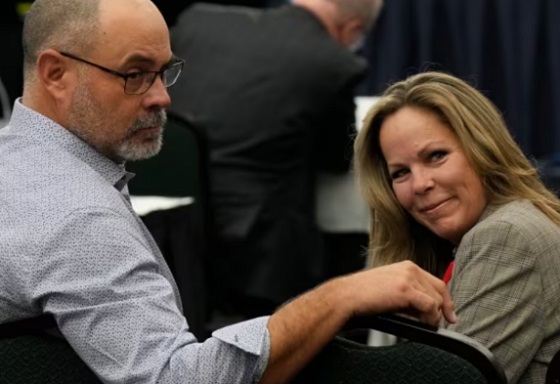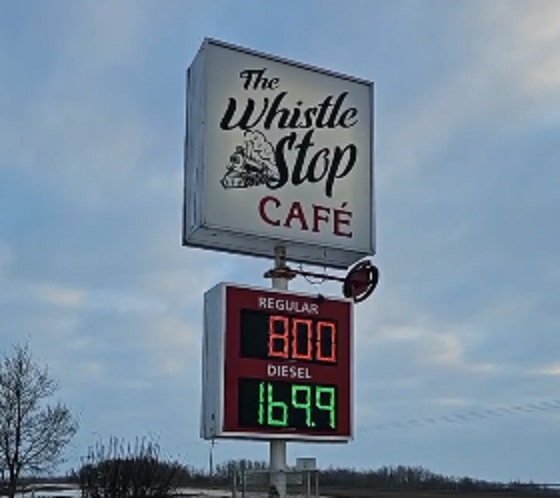Alberta
Update 23: Northwest Alberta wildfires (June 20 at 4 p.m.)
Hot, dry conditions with strong winds create challenges for firefighting.
June 20, 2019
As fires spread in Mackenzie County, approximately 200 additional people evacuated on Wednesday from the area north of Highway 697, south of the Peace River and west of Steep Hill Creek, also called Range Road 164.
More than 700 evacuees from the Paddle Prairie Metis Settlement can return home today. Additional information for residents is online at https://www.facebook.com/paddleprairie
Approximately 8,500 people are still under evacuation orders.
The following communities issued mandatory evacuation orders this week:
- Beaver First Nation – Boyer River (No. 164) and Child Lake (No. 164A)
- Dene Tha’ First Nation – Bushe River (No. 207)
- Mackenzie County
- The Rocky Lane and High Level area north of the Peace River, south of Highway 58, west of Range Road 150
- The Hamlet of La Crete
- Range Road 164 to Range Road 150, south of the Peace River, north of Highway 697
- Peerless Trout First Nation – Trout Lake community and high-risk persons in the surrounding area.
The following communities remain on evacuation alert and should be ready to leave quickly if the situation changes:
- High Level
- Mackenzie County
- Area west of Range Road 164, south of the Peace River to Township Road 1010, and the Machesis Lake campground
- Bigstone Cree Nation 166 A, B, C and D
Current situation
- Chuckegg Creek wildfire, southwest of High Level, is about 330,000 hectares.
- Jackpot Creek wildfire, north of Lutose, is about 77,500 hectares.
- McMillan Wildfire Complex located in the Slave Lake Forest area, is more than 276,800 hectares.
- Check Alberta Emergency Alerts for more detailed and frequently updated information.
- People driving in fire-affected areas should carry enough fuel, as it may not be readily available.
Visit alberta.ca/emergency for detailed and frequently updated information.
Air quality
- Wildfire smoke is causing poor air quality and reduced visibility at times.
- Parts of northwestern Alberta are under special air quality statements.
- Visit FireSmoke Canada for information and resources about smoke from wildland fires.
Financial supports
- Evacuees should check alberta.ca/emergency for updates on evacuation payment eligibility.
- You may qualify for the evacuation payment if you:
- were living, working or vacationing in the affected area
- were forced to leave due to an evacuation order
- paid for most of your costs to evacuate
- were forced to leave your residence (primary, working or vacationing) due to a mandatory evacuation order.
- Albertans who qualify will receive $1,250 and $500 for each dependent child under 18 living in the same home when the evacuation order was given.
- Apply online through the MyAlberta Evacuation Payment application using a smartphone, device or desktop. Interac e-transfers may take 24 hours to process.
- If you need help applying, contact Alberta Supports to find the nearest centre: Toll-free: 1-877-644-9992 (Monday to Friday, 7:30 a.m. to 8 p.m.) In-person: Find an Alberta Supports Centre.
- More than 11,700 individuals have received evacuee support totalling close to $11.9 million.
Reception and call centres
- All evacuees need to register with an evacuation reception centre even if you have found alternate accommodations.
- Reception centres may assist evacuees in person and/or by phone.
- Mackenzie County evacuees must register at Fort Vermilion – Mackenzie County Office, 4511 46 Avenue, 780-927-3718.
- Evacuees from Trout Lake and high-risk persons in the surrounding area of Peerless Trout First Nation must register their location with Jennifer Auger, 780-649-6553, [email protected]. If you evacuated to Edmonton, register at Edmonton Super 8 Hotel, 16818 118 Avenue.
- The Government of Alberta contact centre is open from 8 a.m. to 6 p.m., Monday to Friday. Call 310-4455.
Insurance information
- Most home and tenant insurance policies provide coverage for living expenses during an evacuation.
- Evacuees should retain all of their receipts for food, accommodation and other related expenses to provide to their insurer.
- Albertans can contact the Insurance Bureau of Canada at 1-844-227-5422 or by email at [email protected]. Information about insurance coverage is available online at ibc.ca/ab/disaster/alberta-wildfire.
Re-entry information
Evacuees can find tips on re-entry by visiting https://www.alberta.ca/emergency.aspx. Information includes making sure all your utilities are working, cleaning up and how to deal with door-to-door salespeople offering services and insurance.
Justice and legal matters
- If you have an appointment with a probation officer in an evacuated area, report to the community corrections office nearest you. Please call 780-427-3109 (to call toll-free, first dial 310-0000) for information.
Boil water advisory
- A boil water advisory is in place for Meander River (Dene Tha’ First Nation).
Health
- Mental health support is available by calling Alberta’s 24-hour help line at 1-877-303-2642, the Addiction Helpline at 1-866-332-2322, or Health Link at 811.
Donations and volunteers
- Check the Mackenzie County Facebook page for an up-to-date list of donations needed and drop-off locations.
- There have been reports that local residents in High Level are being solicited by email or phone for donations in support of firefighters or affected residents. Do not share your personal information with them or donate money.
- When asked for donations (either over the phone, through an email, or in person), ask the canvasser for identification or printed information about the charity.
- If you have concerns about the activities of a charitable organization including its fundraising practices, call Service Alberta: 1-877-427-4088.
Canada Post
- Mail and parcel delivery in certain communities has been affected by the wildfires.
- Canada Post has contingency measures in place to serve residents of these communities.
- Check the Canada Post website for updates.
Other income and social supports
- Evacuees who receive Assured Income for the Severely Handicapped or Income Support benefits by cheque should contact their worker to make arrangements to receive it.
- Call Alberta Supports at 1-877-644-9992 between 7:30 a.m. and 8 p.m., Monday to Friday if you:
- need information on other social supports
- are a contracted service provider, family member or individual needing assistance through the Persons with Developmental Disabilities program
- Evacuees in need of financial assistance for immediate needs can apply for an Income Support program emergency needs allowance. This benefit may cover your accommodation, clothing and other urgent needs. Please call 1-877-644-9992 for more information.
- For information on child intervention and child care, call 1-800-638-0715.
- Employment insurance: evacuees can visit Service Canada online to apply at www.canada.ca/en/services/benefits/ei.html. Use code 4812014812201900.
Health card, driver’s licences, ID cards, birth certificate
- To get a replacement Health Care Insurance Card call 780-427-1432 or toll-free at 310-0000 and then 780-427-1432 when prompted. Your Alberta Personal Health Card can be mailed to a temporary address.
- If driver’s licences, identification cards, and/or birth certificates were left behind during the evacuation, replacement cards and certificates can be ordered free of charge at a registry agent.
Public information
- You can call 310-4455 for more information – Monday to Friday 8 a.m. – 6 p.m.
Related information
Backgrounder: Previous updates
Alberta
Big win for Alberta and Canada: Statement from Premier Smith

Premier Danielle Smith issued the following statement on the April 2, 2025 U.S. tariff announcement:
“Today was an important win for Canada and Alberta, as it appears the United States has decided to uphold the majority of the free trade agreement (CUSMA) between our two nations. It also appears this will continue to be the case until after the Canadian federal election has concluded and the newly elected Canadian government is able to renegotiate CUSMA with the U.S. administration.
“This is precisely what I have been advocating for from the U.S. administration for months.
“It means that the majority of goods sold into the United States from Canada will have no tariffs applied to them, including zero per cent tariffs on energy, minerals, agricultural products, uranium, seafood, potash and host of other Canadian goods.
“There is still work to be done, of course. Unfortunately, tariffs previously announced by the United States on Canadian automobiles, steel and aluminum have not been removed. The efforts of premiers and the federal government should therefore shift towards removing or significantly reducing these remaining tariffs as we go forward and ensuring affected workers across Canada are generously supported until the situation is resolved.
“I again call on all involved in our national advocacy efforts to focus on diplomacy and persuasion while avoiding unnecessary escalation. Clearly, this strategy has been the most effective to this point.
“As it appears the worst of this tariff dispute is behind us (though there is still work to be done), it is my sincere hope that we, as Canadians, can abandon the disastrous policies that have made Canada vulnerable to and overly dependent on the United States, fast-track national resource corridors, get out of the way of provincial resource development and turn our country into an independent economic juggernaut and energy superpower.”
Alberta
Energy sector will fuel Alberta economy and Canada’s exports for many years to come

From the Fraser Institute
By any measure, Alberta is an energy powerhouse—within Canada, but also on a global scale. In 2023, it produced 85 per cent of Canada’s oil and three-fifths of the country’s natural gas. Most of Canada’s oil reserves are in Alberta, along with a majority of natural gas reserves. Alberta is the beating heart of the Canadian energy economy. And energy, in turn, accounts for one-quarter of Canada’s international exports.
Consider some key facts about the province’s energy landscape, as noted in the Alberta Energy Regulator’s (AER) 2023 annual report. Oil and natural gas production continued to rise (on a volume basis) in 2023, on the heels of steady increases over the preceding half decade. However, the dollar value of Alberta’s oil and gas production fell in 2023, as the surging prices recorded in 2022 following Russia’s invasion of Ukraine retreated. Capital spending in the province’s energy sector reached $30 billion in 2023, making it the leading driver of private-sector investment. And completion of the Trans Mountain pipeline expansion project has opened new offshore export avenues for Canada’s oil industry and should boost Alberta’s energy production and exports going forward.
In a world striving to address climate change, Alberta’s hydrocarbon-heavy energy sector faces challenges. At some point, the world may start to consume less oil and, later, less natural gas (in absolute terms). But such “peak” consumption hasn’t arrived yet, nor does it appear imminent. While the demand for certain refined petroleum products is trending down in some advanced economies, particularly in Europe, we should take a broader global perspective when assessing energy demand and supply trends.
Looking at the worldwide picture, Goldman Sachs’ 2024 global energy forecast predicts that “oil usage will increase through 2034” thanks to strong demand in emerging markets and growing production of petrochemicals that depend on oil as the principal feedstock. Global demand for natural gas (including LNG) will also continue to increase, particularly since natural gas is the least carbon-intensive fossil fuel and more of it is being traded in the form of liquefied natural gas (LNG).
Against this backdrop, there are reasons to be optimistic about the prospects for Alberta’s energy sector, particularly if the federal government dials back some of the economically destructive energy and climate policies adopted by the last government. According to the AER’s “base case” forecast, overall energy output will expand over the next 10 years. Oilsands output is projected to grow modestly; natural gas production will also rise, in part due to greater demand for Alberta’s upstream gas from LNG operators in British Columbia.
The AER’s forecast also points to a positive trajectory for capital spending across the province’s energy sector. The agency sees annual investment rising from almost $30 billion to $40 billion by 2033. Most of this takes place in the oil and gas industry, but “emerging” energy resources and projects aimed at climate mitigation are expected to represent a bigger slice of energy-related capital spending going forward.
Like many other oil and gas producing jurisdictions, Alberta must navigate the bumpy journey to a lower-carbon future. But the world is set to remain dependent on fossil fuels for decades to come. This suggests the energy sector will continue to underpin not only the Alberta economy but also Canada’s export portfolio for the foreseeable future.
-

 2025 Federal Election2 hours ago
2025 Federal Election2 hours agoMark Carney refuses to clarify 2022 remarks accusing the Freedom Convoy of ‘sedition’
-

 2025 Federal Election6 hours ago
2025 Federal Election6 hours agoPoilievre To Create ‘Canada First’ National Energy Corridor
-

 Bruce Dowbiggin4 hours ago
Bruce Dowbiggin4 hours agoAre the Jays Signing Or Declining? Only Vladdy & Bo Know For Sure
-

 2025 Federal Election5 hours ago
2025 Federal Election5 hours agoFixing Canada’s immigration system should be next government’s top priority
-

 Daily Caller3 hours ago
Daily Caller3 hours agoBiden Administration Was Secretly More Involved In Ukraine Than It Let On, Investigation Reveals
-

 Freedom Convoy2 days ago
Freedom Convoy2 days agoFreedom Convoy leaders Tamara Lich, Chris Barber found guilty of mischief
-

 COVID-192 days ago
COVID-192 days agoTrump’s new NIH head fires top Fauci allies and COVID shot promoters, including Fauci’s wife
-

 2025 Federal Election2 days ago
2025 Federal Election2 days agoWill Four More Years Of Liberals Prove The West’s Tipping Point?




